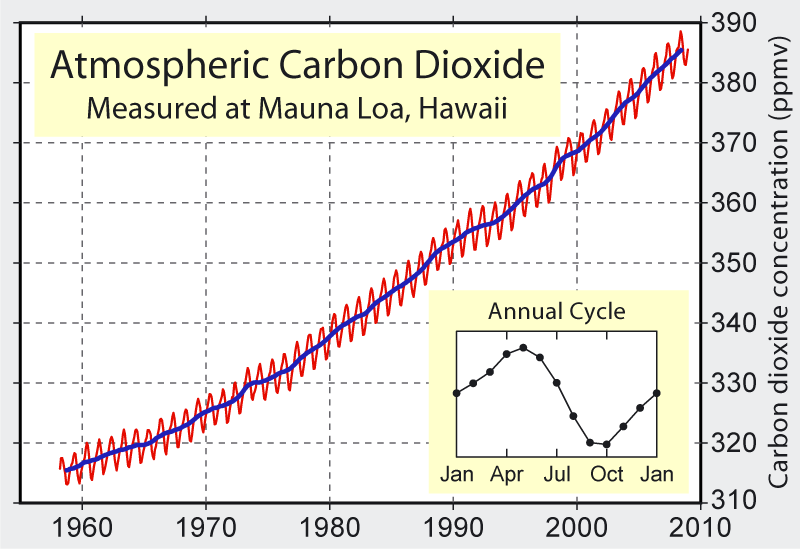Average global concentrations of atmospheric carbon dioxide surpassed 400 parts per million (ppm) this March, according to National Oceanic and Atmospheric Administration (NOAA).
This is the first time since records began that global concentrations of carbon dioxide have been so high. Previously, only isolated areas had reached the 400 ppm mark.
“Reaching 400 ppm as a global average is a significant milestone,” said Pieter Tans, lead scientist of NOAA’s greenhouse gas network. “This marks the fact that humans burning fossil fuels have caused global carbon dioxide concentrations to rise more than 120 ppm since pre-industrial times. Half of that rise has occurred since 1980.”
Atmospheric carbon dioxide is a greenhouse gas. Like all greenhouse gases, it absorbs incoming radiation from the sun and outgoing radiation from the earth. The carbon dioxide then scatters this energy in all directions, including back down to the earth’s surface, increasing its temperatures.
This warming, called the “atmospheric greenhouse effect,” is vital for life to exist on earth.
An increase in concentration of greenhouse gases (like carbon dioxide) amplifies the atmospheric greenhouse effect, which increases average global temperatures. For this reason, scientific consensus is that the increase of atmospheric carbon dioxide is a major contributor to global climate change.
Since the Industrial Revolution, much of the increase in atmospheric carbon dioxide has been the result of human activity through burning of fossil fuels. According to the EPA, the human activities that burn the most fossil fuels are the generation of electricity and transportation, respectively.
The last time atmospheric carbon dioxide levels were this high was over one million years ago, before the evolution of modern humans.
“This event is a milestone on a road to unprecedented climate change for the human race,” climate scientist Dr. Ed Hawkins of the University of Reading told the Guardian.
NOAA also reported that the average growth rate in carbon dioxide concentrations was 2.25 ppm per year from 2012-2014. That is the highest growth rate ever recorded for three consecutive years.
In order to discuss curbing this trend by cutting human carbon emissions around the globe, world leaders will gather for a U.N. climate summit in Paris later this year.
Underscoring the importance of the meeting, Dr. Hawkins said: “Reaching 400 ppm doesn’t mean much in itself, but the steady increase in atmospheric greenhouse gases should serve as a stark reminder of the task facing politicians as they sit down in Paris later this year.”
Even if countries dramatically cut their carbon emissions, concentrations of carbon dioxide in the atmosphere would stabilize, not fall, according to scientists.
“Elimination of about 80 percent of fossil fuel emissions would essentially stop the rise in carbon dioxide in the atmosphere,” said James Butler, director of NOAA’s global monitoring division, “but concentrations of carbon dioxide would not start decreasing until even further reductions are made and then it would only do so slowly.”
According to NOAA’s preliminary data, concentrations of carbon dioxide were at 400.83 ppm this past March, compared to 398.10 ppm at the same time last year.
Carbon dioxide levels remain at peak levels from March until May, when the widespread growth of plants in the northern hemisphere reduces its atmospheric concentration. Until then, the concentration of atmospheric carbon dioxide is expected to remain at its record levels.









